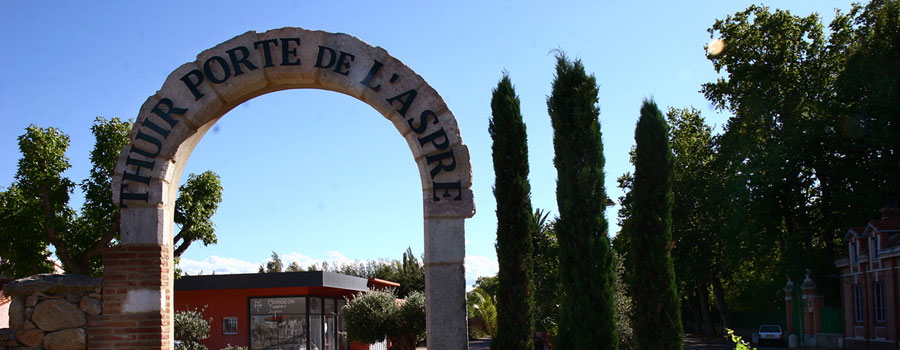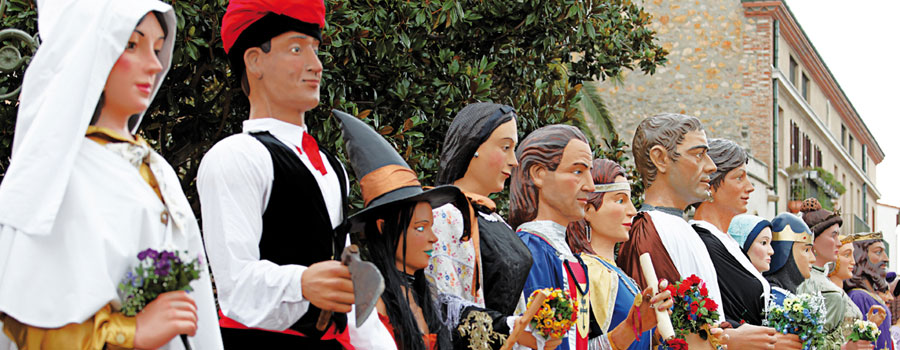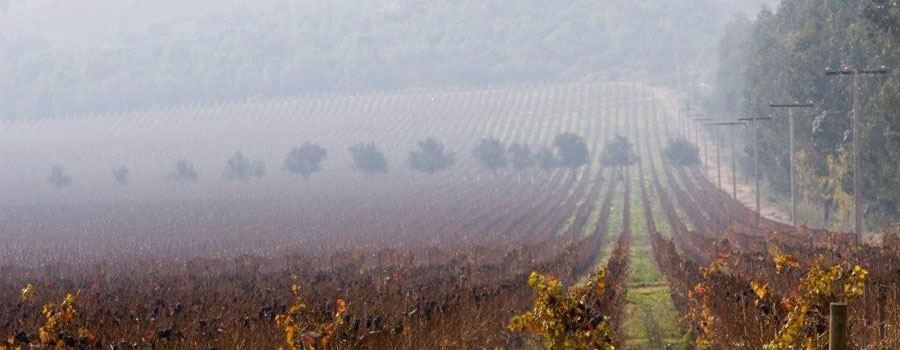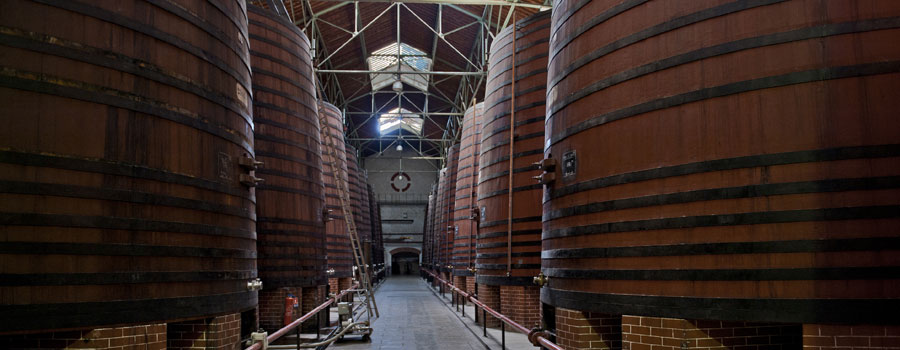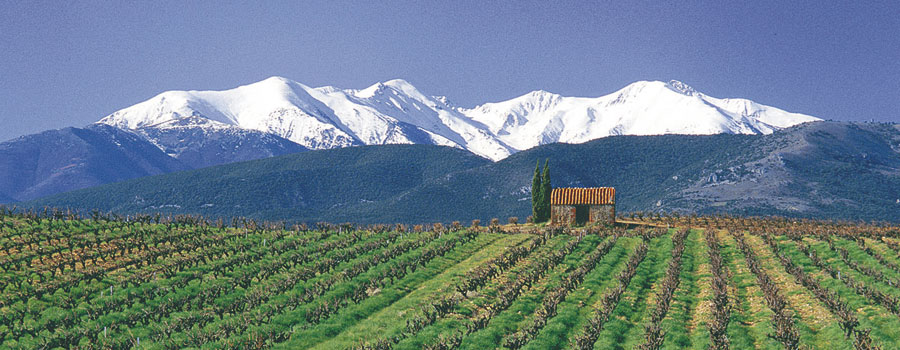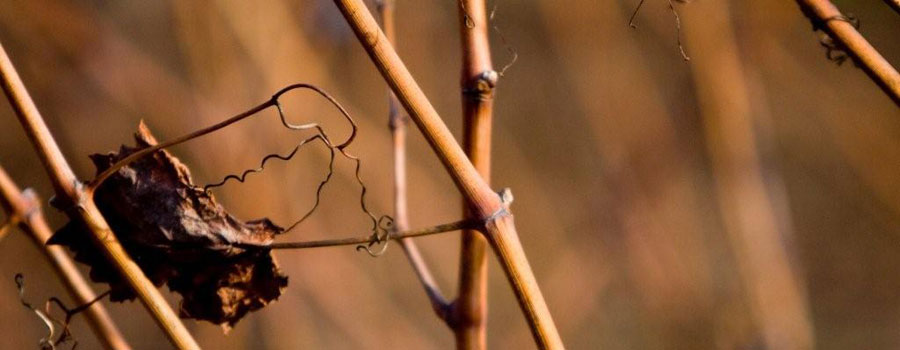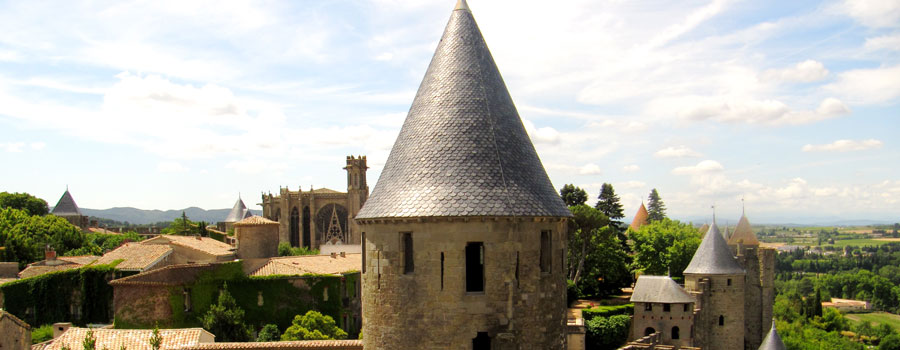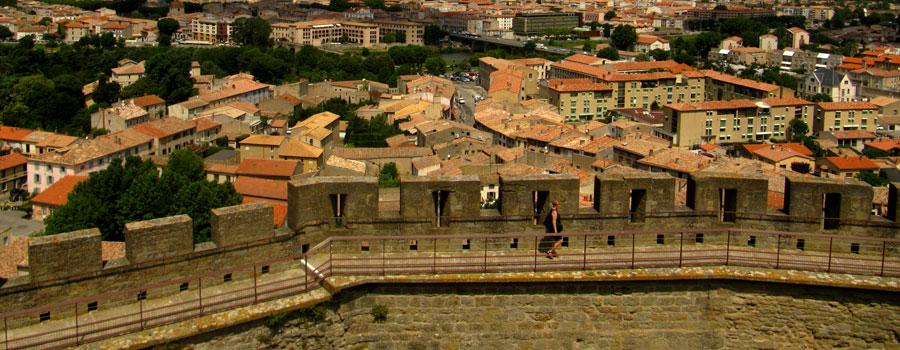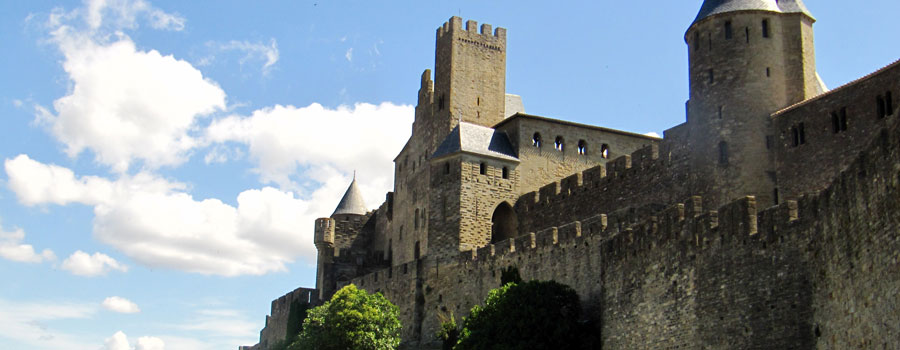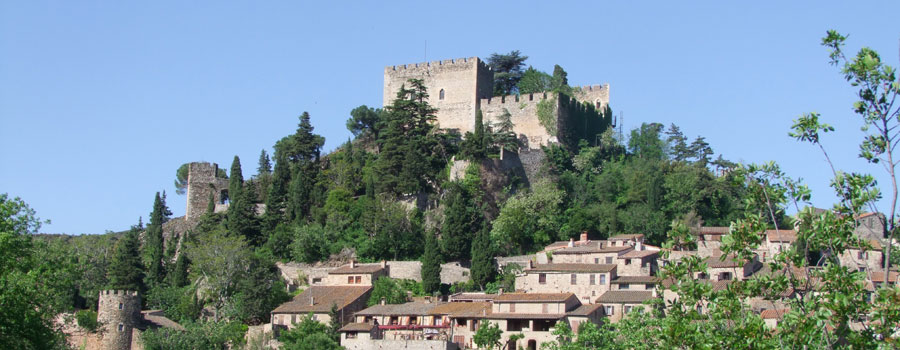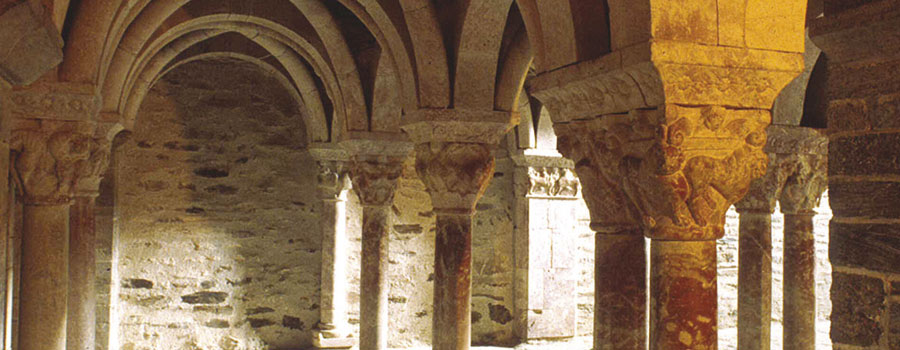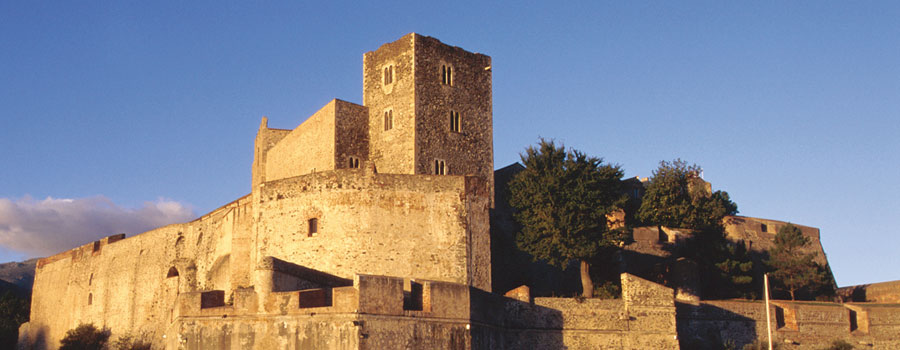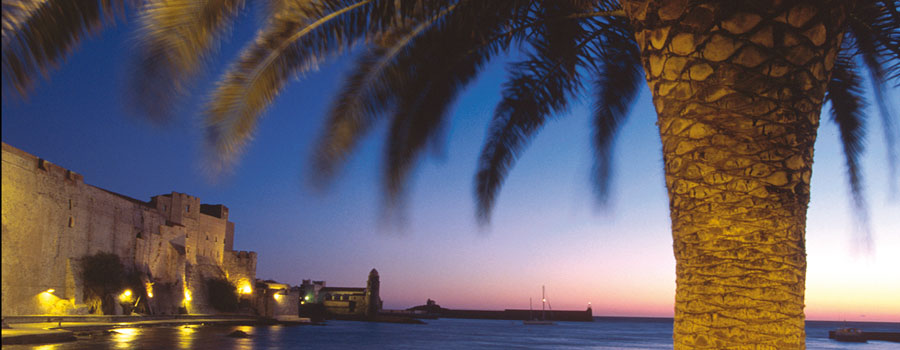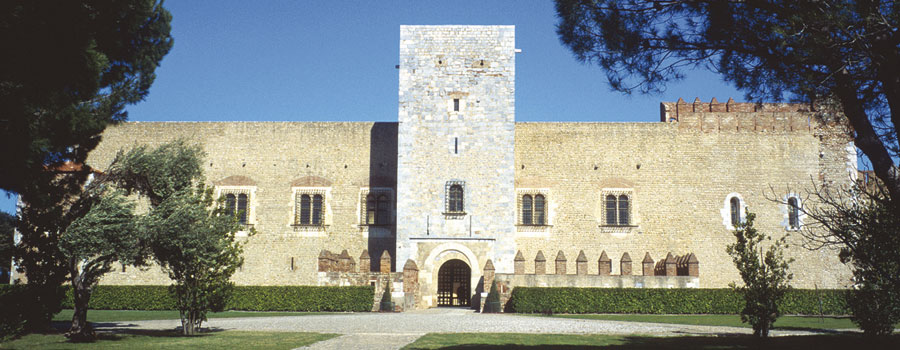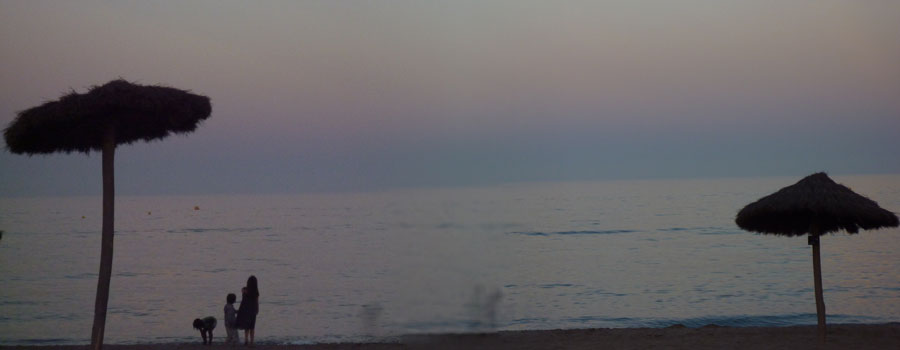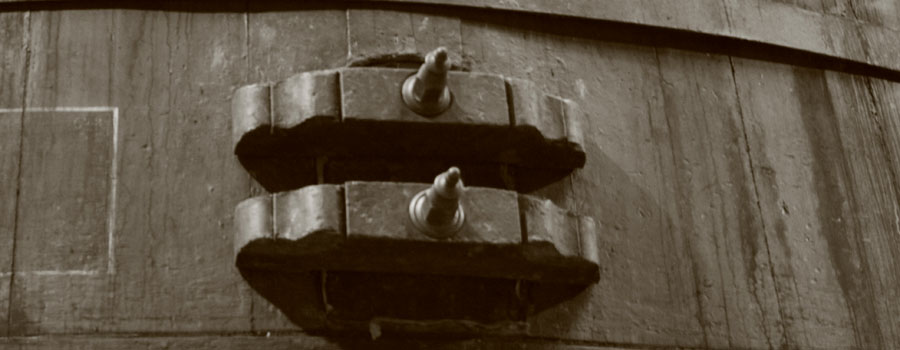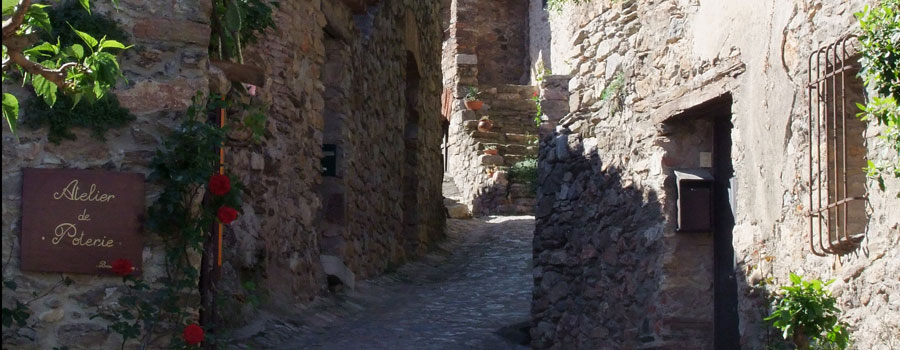Welcome to the ancient land of the Romans…
spend an unforgettable day discovering the Canigou and its treasures .
Take a mystery tour and discover the richness of Romanesque Art …, You can make a pilgrimage to two abbeys, From the foothills of Canigou, “the Holy Mountain” the emblem of Catalan country.
- Saint Martin du Canigou was built in XIth century high up on rocky mountainside to protect it from invasions. This decade celebrates the abbey’s 1000 year anniversary. Today the abbey is home to the “Community of the Beautitudes”. You can feel the very soul of the Abbey as you go along the aisles of the cloistered galleries to XIth century chapel.
- Beyond the majestic bell towers and classical Roman arches stands the Abbey of Saint Michel de Cuxa famed for having part of its’ cloister on display in the Metropolitan Museum in New York.
www.stmartinducanigou.org www.cuxa.org
And also …
Best known for its Romanesque sculptures, the Cloître d’Elne are also home to many Gothic sculptures. The cloisters are a historical monument dating back to 1840.
The church at Arles-sur-Tech was consecrated in 1046, although it was still not finished at this stage. Much work was carried out in the early part of XIIth century which led to a new consecration in 1157.
Along the route of Cathar Castles …
Just a short trip from Casa9 Hotel
A mysterious and exciting, experience – Cathar country……
During the XIIth century,a new kind of Christian religion developed in the south of France different from that of Catholicism: Catharism spread throughout the whole of the Occitaine as the region was known at the time.
Although Catharism was eradicated by Papal decree and a twenty year civil war, its spirit of tolerance, freedom and open mindedness has remained within the Languedoc culture, leaving its mark on the region …
Today, there are few traces left of this history. Castles, abbeys and museums across Cathar country have become memorials to this struggle. Over the subsequent centuries, the appearance of these monuments has changed, but their history remains a reminder of the tragedy of the Middle Ages.
The city of Carcassone, 127 km from the Casa9 Hotel is situated on a rocky spur overlooking the river Aude. Carcassonne, a UNESCO World Heritage site, is the most well-known and best conserved fortressed town in France.
Having been saved from demolition the city became an immense restoration project , between 1844 and 1911, entrusted by the French government to the architect, Eugène Viollet le Duc. Explore the alleys of the lively old town and visit the XIIth century chateau surrounded by the town’s towering ramparts. In the evening the lights of the city provide a magnificent spectacle against the backdrop of the landscape. At the heart of the black mountain, northwest of Carcassonne the terraces of the Château de Saissac sit against a landscape framed by the Pyrenean mountains.
Cathar Country is a historical region in the south of France.
Today, old Cathar castle ruins still stand proudly molded into the surrounding mountains. Discover four hidden gems in the region, all less than an hour from Casa9 Hotel.
Located in the High Corbières, Peyrepertuse sits at 800 meters altitude in the midst of scrubland overlooking the small village of Duilhac. From its highest point, the nearby Quéribus, castle can be seen situated some 5 km away.
In Cathar country, in the landscape of sweet smelling scrub, contrasting with the ordered vineyards of Haut Fitou, the Château of Aguilar stands proud, resting majestically on rock overlooks the plain of Tuchan.
South-west of Narbonne, at the end of a rocky valley in the Corbieres, stands a hidden magnificant Cistercian settlement. The Abbey of Fontfroide dates back to the XIth century and sits snuggly into the classic Mediterranean landscape dominated by cypress, pine and boxwood.
In the footsteps of prehistoric man …
Tautavel is one of the highlights of prehistoric times which has seen international fame thanks to its distinguished ancestor, Tautavel Man.
Opened in 1992, the new Museum of Tautavel, European Prehistoric Research Centre, has been powerful in bringing science concerned with archeology and in particular the quaternary period in prehistoric times to the public eye.
With more than 1500 m2 of exhibition galleries , over 22 rooms, the Museum of Prehistoric Times introduces Tautavel Man, the oldest man found on French soil (-450,000 years).
The Museum presents its prehistoric archaeological collections in a modern way that makes our distant past easy to understand for everyone.
Thanks to faithful reconstructions of prehistoric scenes, you will dive into the heart of the Tautavel valley and make a fabulous journey among its men, animals and landscapes.
There is an authentic reconstruction of the Arago Cave (the place where Tautavel man was discovered) where you can experience this ancestor’s habitat.
